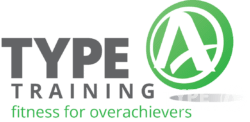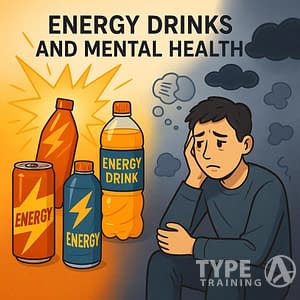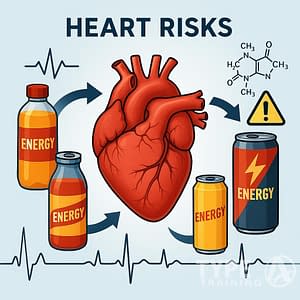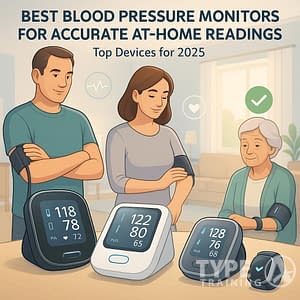A lot of Manhattan professionals end up with movement dysfunction thanks to endless hours at desks, subway sprints, and just the general grind of city life. Having a solid movement assessment routine lets corrective exercise specialists spot muscle imbalances, postural quirks, and compensation habits that cause pain and slow you down.
To effectively assess movement dysfunction, start by identifying common issues in clients, especially those related to their work environments.
Whether you’re working with Wall Street execs in FiDi or athletes in Central Park, knowing how to assess movement is key for building effective corrective exercise plans.
Learning how to assess movement dysfunction is vital for improving client outcomes in corrective exercise.
Popular posts:

Movement assessments are an important way for personal trainers to get valuable information when designing a client’s exercise program, and honestly, in NYC’s fast-paced scene, they’re basically non-negotiable. Your clients in Chelsea, SoHo, or the Upper East Side want solutions that fit their unique movement habits and lifestyles.
As trainers, we must be able to assess movement dysfunction to tailor programs to individual needs.
Assessment isn’t just about watching someone move. It’s a step-by-step process to dig up the real root causes of dysfunction.
When we assess movement dysfunction, we can better understand the underlying causes of pain.
As a corrective exercise specialist in Manhattan, you’ll get hands-on with client intake, static and dynamic assessments, and you’ll turn those findings into tailored corrective strategies. Corrective exercise lets certified trainers and physical therapists pinpoint and fix postural and movement issues before they become injuries.
In your role, being able to assess movement dysfunction is key to developing effective interventions.
Key Takeaways
-
- You need a systematic approach to spot muscle imbalances and compensation patterns that mess with movement
It is essential to assess movement dysfunction thoroughly to create effective client strategies.
-
- Client intake and static assessments set the stage for understanding movement limits before jumping into dynamic tests
- Use assessment results to build corrective programs that target each person’s actual movement dysfunctions
By learning how to assess movement dysfunction, trainers can lay the groundwork for success in corrective exercise.
How to Effectively Assess Movement Dysfunction
Many fitness pros emphasize the need to assess movement dysfunction for optimal training results.

Getting to the bottom of movement dysfunction takes a mix of know-how and practical assessment skills. That’s where corrective exercise specialists shine—finding the source of movement issues and building interventions for people with postural quirks and muscular imbalances.
Role of Corrective Exercise Specialists
Think of yourself as the go-between for fitness and rehab. Your main job is to spot movement patterns that might lead to injury or just lousy performance.
Corrective exercise specialists look at movement dysfunction, not just pain. This way, you can catch problems before they turn into something more painful.
In Manhattan, your skills matter even more. You’ll see Midtown pros with forward head posture and rounded shoulders from endless desk hours. Upper East Siders? They’re tight in the hips from all that sitting.
With your CES credential, you’re equipped to:
-
- Spot compensation patterns
- Build targeted corrective programs
- Teach clients about proper movement mechanics
- Team up with healthcare pros when needed
Taking time to assess movement dysfunction can lead to significant improvements in client performance.
In Chelsea and SoHo, you might work with artists or creatives who’ve developed their own unique postural habits on the job.
Key Concepts of Movement Dysfunction
To effectively assess movement dysfunction, you need a comprehensive understanding of body mechanics.
Movement dysfunction pops up when your body tries to make up for limits in mobility, stability, or motor control. These workarounds lead to inefficient movement and up the risk of injury.
Muscular imbalances mess with movement patterns and posture. If you get this, you can usually figure out where the problem started.
When trainers assess movement dysfunction, they can tailor interventions to client-specific issues.
Some common muscle dysfunctions:
Understanding how to assess movement dysfunction is crucial for effective program design.Learning to assess movement dysfunction helps trainers address the unique challenges each client faces.Correctly assess movement dysfunction to find solutions that enhance client well-being.It’s important to assess movement dysfunction in those with a sedentary lifestyle, particularly in urban settings.As a corrective exercise specialist, you must assess movement dysfunction to develop individualized interventions.Being able to assess movement dysfunction allows you to address clients’ unique needs effectively.
| Dysfunction Type | Description | Example |
|---|---|---|
| Length-Tension | Muscles too tight or too loose | Tight hip flexors, weak glutes |
| Force-Couple | Muscle groups not working together | Upper trap dominance over lower traps |
| Arthrokinematic | Joint movement restrictions | Limited ankle dorsiflexion |
Life in Tribeca or the Financial District piles on its own movement challenges. Subway rides, stairs, and pounding the pavement all affect how your clients move.
To truly help clients, you need to assess movement dysfunction and identify necessary changes.
Muscle imbalances sneak up over time from repetitive postures. A Wall Street trader, for example, might end up with thoracic kyphosis after years hunched over monitors.
Importance of Identifying Musculoskeletal Imbalances
Assessing movement dysfunction is a proactive approach to injury prevention.
Spotting musculoskeletal imbalances early keeps small annoyances from turning into big problems. Movement assessments give you the data you need to build smart exercise programs.
Training with bad movement patterns just locks in dysfunction and ramps up injury risk. So, assessment comes first—always.
When you assess movement dysfunction, you gain insights that allow for targeted training adjustments.
You want to figure out:
-
- Overactive muscles that need stretching
Learning how to assess movement dysfunction enhances the effectiveness of your corrective strategies.
-
- Underactive muscles that need some strengthening
- Joint restrictions that block normal movement
Clients appreciate professionals who can assess movement dysfunction clearly and effectively.
- Compensation patterns that hide deeper issues
In the West Village, you might meet clients with ankle restrictions from years of walking on cobblestones. That kind of thing often causes compensation all the way up the chain.
To help clients improve, trainers must know how to assess movement dysfunction properly.
Corrective exercise helps fitness pros tackle postural and movement dysfunctions head-on. This proactive approach keeps Manhattan clients moving well, no matter how hectic their lives get.
Essential Client Intake and Pre-Assessment Procedures
Correctly assess movement dysfunction to ensure safety and effectiveness in exercise programs.
Before you dive into movement assessments, you’ve got to gather key health info and set clear expectations with clients. This step finds any red flags that need a doctor’s OK first and makes sure your corrective exercise plan is safe and effective.
Assess movement dysfunction to create effective strategies for each individual.
Health History and Physical Activity Readiness Questionnaire (PAR-Q)
The PAR-Q is your first filter to catch clients who need medical clearance before getting started. Personal trainers should chat with clients about their goals before any assessments, since that info shapes your approach.
Identifying how to assess movement dysfunction is essential for any fitness professional.
Make sure every client fills out the PAR-Q+ completely. The updated version digs deeper than the old seven-question form.
Pay special attention to:
To succeed, trainers must be able to assess movement dysfunction in their clients.
-
- Any meds and how they affect exercise
- Surgeries or injuries in the last year
By learning how to assess movement dysfunction, you position yourself as an expert.
-
- Chronic stuff like diabetes, heart disease, arthritis
- Joint pain or limits in daily movement
Knowing how to assess movement dysfunction can set you apart in a competitive fitness industry.
For Manhattan pros glued to desks in Midtown or FiDi, keep an eye out for neck pain, lower back problems, and tight hips. Those are all too common and might call for tweaks in your assessment.
If a client checks “yes” on several PAR-Q+ questions, send them to a medical pro for clearance first.
Effective trainers prioritize the ability to assess movement dysfunction before creating any workout plans.
Establishing Assessment Goals and Client Expectations
Your assessment plan should match each client’s goals and fitness level. Someone from Wall Street looking to fix their posture isn’t going to need the same tests as a SoHo artist prepping for a race.
In summary, knowing how to assess movement dysfunction is critical for holistic client care.
During your chat, break down what each assessment involves and why it matters. NYC clients are busy—remind them that good assessment saves time and gets results faster.
Set expectations for:
As you refine your skills, remember to assess movement dysfunction continually.
-
- How long assessments take and what movements they’ll do
- How you’ll use the results to build their program
Ultimately, the ability to assess movement dysfunction will enhance your effectiveness as a trainer.
-
- The difference between assessment and being judged
- When you’ll check back in to track progress
By focusing on how to assess movement dysfunction, you can better serve your clients’ needs.
For folks from the Upper East Side or Chelsea who’ve been to gyms before, explain that corrective exercise isn’t just regular training. It’s about quality of movement, not just reps, and about solving the real cause of their aches.
Don’t forget the emotional side. If someone struggles with a movement, reassure them—it’s all info to help you help them.
To effectively guide clients, you must assess movement dysfunction with care and precision.
Recognizing the Need for Medical Referral
You’ve got to know when a movement issue is your turf and when it’s time to call in a medical pro. That keeps everyone safe and gets clients the care they need.
Remember, the first step is to assess movement dysfunction accurately for optimal results.
Immediate medical referral signs:
-
- Sharp, shooting pain during movement
In conclusion, your ability to assess movement dysfunction is foundational to effective corrective exercise.
-
- Numbness or tingling in hands or feet
- Recent injuries (last 2-4 weeks)
The journey to improve your skills begins with learning how to assess movement dysfunction.
-
- Weird swelling or inflammation
- Dizziness or unexplained balance trouble
Regularly assess movement dysfunction to ensure continuous improvement for you and your clients.
Movement pain and medical pain aren’t the same. Movement pain might come from tightness or lack of mobility—something you can work on as a corrective exercise specialist. Medical pain needs a doc.
For Manhattan’s busy set, this call can be tricky. That nagging shoulder pain from laptop use? Maybe you can help. Sudden pain out of nowhere? That’s for a doctor.
As you advance in your career, always remember the importance of knowing how to assess movement dysfunction.
When you’re not sure, play it safe. Having a network of healthcare folks in Tribeca, West Village, or wherever your clients live just boosts your credibility and gives clients better care.
Step-By-Step Movement Assessment Techniques
To help clients reach their goals, it’s essential to assess movement dysfunction consistently.
A good movement assessment moves from simple to complex. Start with static observation, then layer on functional testing. Each step helps you spot dysfunctions in the kinetic chain and figure out which muscles need attention.
Ultimately, trainers must learn how to assess movement dysfunction to provide effective solutions.
Static Postural Assessment
Static postural assessment is where you start—before any movement happens. Check out five key checkpoints: foot and ankle, knee, hips, shoulders/thoracic spine, and head/neck.
By mastering how to assess movement dysfunction, you will improve client satisfaction and results.
Ask your client to stand relaxed. Look from the front, back, and side. You want to see if the ear lines up over the shoulder, shoulder over hip, and hip over ankle.
Common things you’ll see:
Assess movement dysfunction regularly to stay informed about your clients’ changing needs.
-
- Forward head posture—classic for Manhattan desk jockeys
- Rounded shoulders—common with subway commuters lugging bags
Incorporate efforts to assess movement dysfunction into your ongoing education as a trainer.
-
- Anterior pelvic tilt—seen in Midtown pros who wear heels a lot
- Knee valgus—shows up in active Upper East Siders
Always strive to assess movement dysfunction comprehensively to enhance your practice.
Write down what you notice. These details shape your movement assessment flow and clue you in for dynamic testing.
Overhead Squat Assessment
Understanding how to assess movement dysfunction makes you a more effective corrective exercise specialist.
The overhead squat assessment is your first real look at how the body moves as a unit. It shows control, range of motion, stability, and how well everything works together.
Have your client lift both arms overhead and do 5-10 squats. Watch for these:
Be diligent about how you assess movement dysfunction to drive client success.
Front view:
-
- Feet turning out or flattening
Your ability to assess movement dysfunction will ultimately define your career in fitness.
-
- Knees caving in
- Arms dropping forward
Never underestimate the importance of learning how to assess movement dysfunction.
Side view:
-
- Leaning too far forward
For continuous improvement, assess movement dysfunction as part of your regular routine.
-
- Arms drifting ahead of the body
- Heels coming up off the floor
To excel in your field, make sure you can assess movement dysfunction effectively.
If you spot foot or ankle trouble, try the heels elevated modification. Put a wedge under their heels and repeat. If things look better, it’s probably an ankle mobility issue.
For anterior pelvic tilt, try hands-on-hips. If the arch in the back improves, tight lats might be part of the problem.
Prioritize the ability to assess movement dysfunction as you develop your skillset.
Functional Movement Testing: Single-Leg, Lunge, and Step-Up
Single-leg tests really highlight left-right differences and stability issues. These are gold for Chelsea and SoHo clients who run or cycle.
Ultimately, knowing how to assess movement dysfunction will enhance your practice and client relationships.
Single-Leg Squat: Have your client stand on one leg and squat. Watch for:
-
- Knee caving in
Remember to assess movement dysfunction regularly to ensure effective corrective strategies.
-
- Hip dropping on the other side
- Too much trunk lean
As you grow, continue to assess movement dysfunction to adapt your approach to each client.
- Losing balance
Lunge Assessment: Check both forward and side lunges. See if the knee tracks over the toe and if they control their descent. Note if one side compensates more.
Through ongoing education, aim to assess movement dysfunction effectively and regularly.
Step-Up Test: Use a 6-8 inch step. Look for hip hiking, knee valgus, or trunk lean. These often mean weak hips or poor neuromuscular control.
For Financial District clients, these tests show how all those stairs and city miles affect their movement.
By consistently learning to assess movement dysfunction, you will achieve better results.
Analyzing Range of Motion and Balance
Range of motion testing helps spot joint restrictions that mess with how people move. Zero in on areas that usually limit your NYC clients’ movement patterns.
To remain effective, always assess movement dysfunction to address emerging client needs.
Shoulder Mobility: Check overhead reach and internal rotation. A lot of folks in Manhattan have limited range here, probably from way too much desk time.
Hip Mobility: Look at hip flexion, extension, and rotation. If hip extension is tight, it often leads to lower back compensation—especially for clients parked in chairs all day.
Your effectiveness hinges on your ability to assess movement dysfunction accurately.
Ankle Dorsiflexion: Test with both a straight and bent knee. Stiff ankles can kill squat depth and force the knees or hips to pick up the slack.
Balance Testing: Try single-leg stance, eyes open and closed. When that’s easy, move on to the Davies Test for upper body stability.
For the best outcomes, be prepared to assess movement dysfunction throughout your career.
Jot down any degrees of limitation if you can. Compare left and right sides to catch any asymmetries.
For West Village and Tribeca folks who walk everywhere on uneven sidewalks, balance tests show how well they handle real-world movement challenges.
In conclusion, knowing how to assess movement dysfunction is integral to your success.
Translating Assessment Results into Corrective Exercise Programs
Elevate your practice by learning to assess movement dysfunction at all stages of training.
After you finish your movement assessment, it’s time to get practical and build a corrective exercise plan. This means figuring out muscle imbalances, picking the right interventions, and rolling out strategies that actually work for your client’s issues.
Identifying Overactive and Underactive Muscles
As you refine your methods, keep assessing movement dysfunction to maintain client engagement.
Assessments show you which muscles are doing too much and which ones are slacking off. Overactive muscles usually feel tight, dominant, or are clearly compensating for something.
Common Overactive Muscles in Manhattan Professionals:
Finally, the ability to assess movement dysfunction is a game-changer in fitness professions.
-
- Upper trapezius (hello, desk stress)
- Latissimus dorsi (thanks, forward head posture)
To truly help clients, you must assess movement dysfunction with precision and care.
-
- Hip flexors (from endless sitting)
- Erector spinae (trying to make up for a weak core)
As a trainer, it is vital for you to assess movement dysfunction accurately and thoroughly.
Underactive muscles seem weak or just don’t want to fire during movement. These need some wake-up calls before you even think about strengthening.
Typical Underactive Muscles:
For your clients, knowing how to assess movement dysfunction will make a significant impact.
-
- Deep neck flexors
- Rhomboids and middle traps
Ultimately, your ability to assess movement dysfunction effectively will determine your success.
-
- Glutes (especially glute medius)
- Transverse abdominis
To maximize your impact as a corrective exercise specialist, learn to assess movement dysfunction consistently.
Patterns pop up fast. Someone grinding away in Midtown might show that classic “upper crossed syndrome.” You’ll see overactive upper traps and underactive deep neck flexors in the assessment.
Corrective Exercise Program Design Principles
Always assess movement dysfunction thoroughly to ensure your corrective measures are effective.
Your corrective exercise program design should have some structure, but don’t overthink it. The best programs tackle muscle imbalances in a certain order.
The Four-Phase Approach:
In summary, assessing movement dysfunction is key to your effectiveness as a fitness professional.
-
- Inhibit overactive muscles
- Lengthen tight tissue
Elevate your skills by learning how to assess movement dysfunction accurately and effectively.
-
- Activate underactive muscles
- Integrate new movement patterns
As a corrective exercise specialist, you must continually assess movement dysfunction to serve clients well.
Kick off each session by calming down overactive muscles. This gets the nervous system ready for the real work. Your Chelsea client? Their hip flexors probably need some TLC before you try to fire up those glutes.
Make it fit your client’s life. A Financial District exec might only have time for a 20-minute morning routine at home. A West Village artist could be up for longer sessions focused on posture.
For lasting impact, committing to assess movement dysfunction is essential in your practice.
Program Variables to Consider:
-
- Frequency (at least 2-3 times a week)
In conclusion, the ability to assess movement dysfunction is vital for effective corrective exercise programming.
-
- Exercise duration (think hold times and reps)
- Progression timeline (recheck things every 2-4 weeks)
Developing your skill to assess movement dysfunction will have far-reaching benefits for your clients.
- Home exercise compliance (yep, that matters)
Applying Self-Myofascial Release and Flexibility Techniques
Ultimately, your success in fitness hinges on your ability to assess movement dysfunction effectively.
Self-myofascial release goes first. It chills out overactive muscles and gets tissues ready for stretching.
Foam Rolling Guidelines:
To truly help clients, you must assess movement dysfunction and adjust your strategies accordingly.
-
- Roll slowly, about an inch per second
- Hang out on tender spots for 30-60 seconds
Always assess movement dysfunction to produce optimal results in all client interactions.
-
- Keep the pressure steady
- Hit the overactive muscles you found earlier
For overall success, commit to learn how to assess movement dysfunction continuously.
Upper East Side clients often love using a lacrosse ball on their tight lats. Sometimes, they notice better overhead reach right away.
After rolling, move to targeted stretching for the short, overactive muscles. Static stretching works best here.
In essence, knowing how to assess movement dysfunction is a key element of your fitness career.
Effective Stretching Protocol:
-
- Hold for 30-60 seconds
As you advance, keep in mind the importance of knowing how to assess movement dysfunction.
-
- Do 2-3 reps
- Focus on the muscles you ID’d as tight
Ultimately, the ability to assess movement dysfunction will define your effectiveness as a trainer.
- Don’t forget to breathe
Tribeca pros with forward head posture usually need stretches for their suboccipitals and upper cervical extensors. These muscle-lengthening techniques can make posture look better almost immediately.
To excel, you must assess movement dysfunction regularly and diligently.
Progressions and Reassessments
Your program should change as your client gets better. Start simple—think basic activation drills—then work up to more complex, integrated moves.
To provide the best care, assess movement dysfunction diligently with every client.
Activation Exercise Progression:
-
- Week 1-2: Isolated muscle activation
As trainers, we must constantly assess movement dysfunction to ensure optimal client outcomes.
-
- Week 3-4: Add stability challenges
- Week 5-6: Activate muscles during functional moves
Focus on how to assess movement dysfunction to build a successful career in fitness.
- Week 7+: Blend into strength training
A SoHo client with lazy glutes? Start them on clamshells, then ramp up to single-leg deadlifts. That way, their glutes can keep up as things get tougher.
For a rewarding career, prioritize your ability to assess movement dysfunction in your practice.
Recheck movement every 2-4 weeks. Some Manhattan clients notice better posture in the first couple of weeks, but lasting movement changes take more time.
Key Reassessment Markers:
By mastering how to assess movement dysfunction, you will attract more clients to your services.
-
- Range of motion improves
- Muscle activation gets better
As you grow, your ability to assess movement dysfunction will enhance your effectiveness as a trainer.
-
- Fewer compensations
- Functional performance goes up
Ultimately, your journey to help others begins with knowing how to assess movement dysfunction.
Track these changes. Your notes shape the program and keep clients pumped about their progress. Let’s be real—busy professionals want to see results if they’re going to stick with a routine.
Frequently Asked Questions
In summary, the ability to assess movement dysfunction is crucial for successful training outcomes.
Corrective exercise specialists use tried-and-true assessment tools to spot movement problems and create custom training plans. They’re all about fixing muscle imbalances, dialing in posture, and preventing injuries with targeted exercises.
As you refine your skills, remember the importance of your ability to assess movement dysfunction.
What methodologies are commonly used by corrective exercise specialists to identify movement dysfunctions?
Corrective exercise specialists use systematic assessment methods to spot movement issues and muscle imbalances. The Functional Movement Screen (FMS) is the go-to—it checks out seven basic movement patterns.
In order to effectively serve clients, assess movement dysfunction regularly and thoroughly.
Postural assessments look at your alignment while you’re standing, sitting, and moving. Specialists watch for forward head posture, rounded shoulders, and hip imbalances—super common for Manhattan professionals glued to their desks.
Movement pattern analysis checks how you do everyday stuff like squats, lunges, and reaching overhead. It helps catch those sneaky compensations from weak or tight muscles.
Continuously assess movement dysfunction to adapt to the ever-changing needs of your clients.
Muscle length and strength testing pinpoints the trouble spots. Your specialist might check hip flexor tightness, glute strength, and core stability to figure out why certain moves feel off.
In NYC, some patterns pop up again and again. Walking on concrete, lugging heavy bags, and long commutes all add up to predictable movement quirks.
To achieve optimal results, you must assess movement dysfunction effectively and consistently.
How does the Functional Movement Screen (FMS) assist in developing an effective corrective exercise plan?
The FMS highlights major movement issues that need fixing before you move on to harder exercises. It scores seven patterns from 0-3, with lower numbers meaning more dysfunction.
To make a real difference, you should be prepared to assess movement dysfunction in all contexts.
Your specialist uses those scores to decide what to tackle first. Bomb the shoulder mobility test? They’ll work on that before letting you do overhead presses.
The screen also shows if you need medical clearance before starting a program. If you feel pain during any movement, a healthcare provider should check it out.
In closing, the ability to assess movement dysfunction is essential for successful client outcomes.
Results shape which exercises you do and when. If your deep squat score is low, expect hip mobility and glute work before you touch a loaded barbell.
For busy Manhattanites, FMS is a time-saver—it zeros in on the most urgent issues and gets you working on what matters most.
Your future success depends on your ability to assess movement dysfunction accurately.
Can you describe the rehabilitation process for common movement dysfunctions through corrective exercises?
The rehab process follows a step-by-step plan to fix overactive and underactive muscles. Your specialist builds a program based on what your assessment shows.
Always be ready to assess movement dysfunction to ensure your approach is effective.
Phase one is all about calming down overactive muscles with foam rolling and stretching. Upper East Siders often need extra work on tight hip flexors and chest muscles from all that sitting.
Phase two fires up the muscles that have gone quiet. Glute activation is a must for most Manhattan residents stuck in chairs all day.
Ultimately, mastering how to assess movement dysfunction will significantly enhance your practice.
Phase three brings in functional exercises to groove proper movement patterns. You’ll practice squats, lunges, and reaching with better form to teach your nervous system new habits.
Phase four moves you into strength and sport-specific training. Once you move well, you can safely take on tougher stuff.
As professionals, we must continually assess movement dysfunction to meet client needs.
Most people see basic corrections in 4-8 weeks. Trickier dysfunctions might need months of steady effort.
What assessments can be performed to evaluate the efficacy of corrective exercise interventions over time?
For the best results, commit to learning how to assess movement dysfunction thoroughly.
Follow-up FMS tests show if your movement quality is getting better. Your specialist will retest the same seven patterns to see what’s changed.
Range of motion checks track flexibility gains. Hip flexor length, shoulder mobility, and ankle dorsiflexion are common retests.
Strength tests show if muscle activation is improving. Glute strength, core stability, and postural endurance get measured to see if the program’s working.
Pain scales help track how symptoms change. Lots of Chelsea clients report less back pain and more comfort in daily life.
Comparing postural photos gives a visual on alignment changes. You can literally see shifts in head position, shoulder height, and spine curve.
Functional tasks—like climbing stairs, carrying groceries, or sitting at a desk without pain—show real-world progress.
How do corrective exercise specialists tailor training programs to individual client needs and movement impairments?
Specialists break down movement patterns to spot muscle imbalances and build custom programs for each person. No two routines are the same—everyone’s got their own quirks.
Your lifestyle plays a big role. A Financial District trader with neck pain gets a different plan than a SoHo artist with hip tightness from long hours in the studio.
Exercise choices match your abilities and goals. Beginners stick with activation basics, while athletes get sport-specific tweaks.
Progression moves at your pace. Some folks cruise through the phases; others need more time on mobility and activation.
Specialists factor in your medical history and current symptoms when creating your plan. Old injuries or chronic stuff can change the whole approach.
Schedules are flexible for NYC life. Programs can shift for home, office, or gym—whatever fits your time and space.
What are the key factors in designing a corrective exercise regimen to enhance athletic performance while reducing the risk of injury?
Movement quality really comes first in any corrective program. Specialists make sure you can nail basic movement patterns before you get to the flashy stuff.
If you skip over asymmetries, you risk developing compensation patterns that often lead straight to injury. Left-right imbalances in strength or mobility? Those will absolutely show up when you push into higher-intensity work.
Most smart programs follow a logical progression, moving from basic corrections to more sport-specific movements. You want to lay down that foundation of good movement first, then layer on speed, power, or more complex skills as you go.










